
Growing hostas in pots
Everything you need to know to successfully grow hostas in pots
Contents
Plants for cool, moist soil, hostas with their magnificent broad striate leaves settle in shade or partial shade for a guaranteed lush effect. They are among those perennials that tolerate planting equally well in open ground, pots or containers. They even create an exotic display in containers of different varieties where, thus raised, they are protected from their main enemy, slugs. They are therefore perfect for a patio or city garden and stylishly dress a terrace or a shady balcony. Grouped together, they contribute to a container garden with a very contemporary touch.
Follow our tips to ensure success when growing hostas in pots!
Benefits of container growing for Hostas
Generous perennial much loved for its highly decorative foliage, Hosta has a small Achilles’ heel: snails and slugs are mad about it! If you have them in garden, you have probably watched in dismay the numerous unsightly perforations on their deliciously crisp leaves, despite their promise. Many tricks exist to counter nasty gastropods… and field mice that also relish their roots; some varieties are also more resistant…
But to grow Hostas in pots is an interesting solution for anyone with a balcony or small shaded courtyard that is just waiting to be brightened. Placing them in pots directly within a border, along a path or in a shaded corner of garden is just as visually appealing and can even form a structural element. Raised like this, your Hostas are less vulnerable to slug attacks, although clever mulching still proves useful. They will be more resilient to a wet spring, which is bad news for Hostas.
Discover our video featuring Michel’s potted Hostas in our guest garden, the Barges garden:
To grow Hostas in pots also allows you to move them as you wish, and to enliven a corner of terrace or garden according to seasons.
As they enter dormancy from November to March, your pots will be quite bare during winter, and this will be more noticeable for Hostas grown in pots than in ground: by choosing a large container you can plant a few small-diameter bulbs shallowly at the pot edge, such as snowdrops or crocuses, which will brighten the space at start of year.
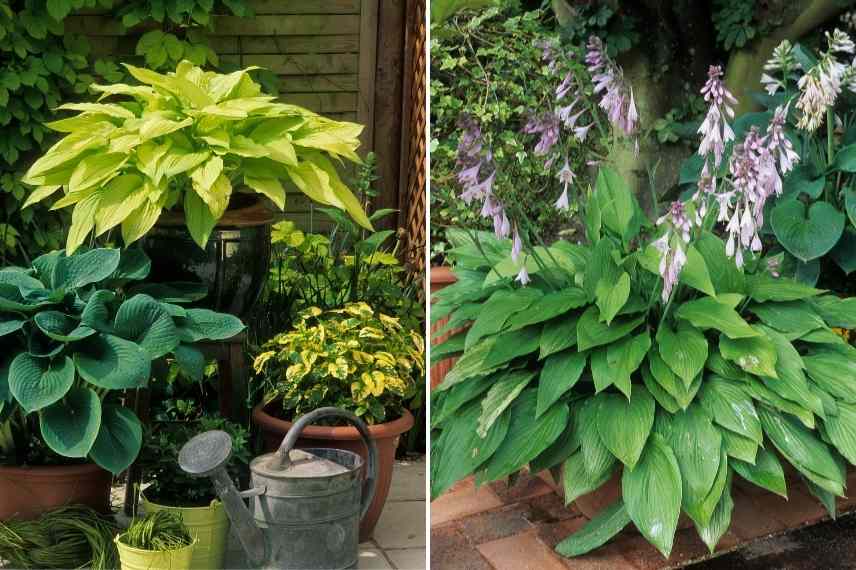
Read also
Hosta: planting, growing and careWhat pot type and which pot size?
It all depends on style of area you want to dress with pots and on your tastes. If you’re going to do it, opt for fairly tall pots: you will delay slugs and snails from climbing up. You can install large tubs on metal stands, for example — as well as providing your hostas with isolation from soil, this will show them off particularly well.
Pruning will depend on the variety (see below), but with their relatively modest clumps (generally 60 cm across), pots with a minimum diameter of 40 cm are sufficient for most (30 cm for dwarf cultivars up to 60 cm and more for giant varieties). In all cases, pot diameter should be roughly proportional to hosta size at ripeness.
For an effective display play with sizes and shapes of your pots but ideally keep the same material, which is more attractive, for a given range of plants, shade in this case. In a border, where you will leave pots year-round on soil (without saucer), choose a frost-resistant material, for example terracotta or glazed terracotta for a camouflaging effect. Stoneware is also a good option as it is frost-resistant. It is now available in contemporary styles too, but you will need to drill a hole in its base. Another option with a giant hosta: a large, brightly coloured pot, turquoise or red for example, which will instead create a focal point of interest. Along a shaded path, a run of pots of the same size will create attractive rhythm and perfectly complement the area.
Glazed terracotta has the advantage for hostas of drying out less than plain terracotta, which is porous. It will therefore stay fresher for longer. Avoid heat-retaining materials such as plastic or metal. However, zinc containers are very flattering for hostas — well placed in shade and watered correctly they do not suffer in summer.
Discover other Hostas - Plantain Lilies
View all →Available in 2 sizes
Available in 1 sizes
Available in 1 sizes
Available in 1 sizes
Available in 1 sizes
Available in 1 sizes
Available in 2 sizes
Available in 2 sizes
Available in 1 sizes
Available in 1 sizes
When and how to plant?
Plant ideally in early spring, early April is when hostas begin to emerge from soil as long, coiled cylinders. You can also do this in autumn if you divide garden stumps and pot them up.
Hosta is certainly a plant of cool ground, but for pot planting ensure it has a drainage hole in its base, otherwise it will become a swimming pool come mid-winter. A drainage layer of clay pebbles about 3 cm thick is welcome.
Substrate must be free-draining but rich and retain coolness: make a mix of garden soil and potting compost, and ideally well-rotted compost or leaf mould if you have any. Do not untangle large, somewhat fragile roots too much.
Adding a mulch will be very useful, both to create a double barrier against slugs and to help keep substrate cool in summer: choose a coarse mulch that hinders gastropod movement such as hazelnut shells, coarse woodchip, etc.
Do not necessarily add a saucer under your pot, unless you think you will not be able to water sufficiently or when you go on holiday. Remove the saucer in winter, rainfall will be sufficient during the plant’s dormancy.
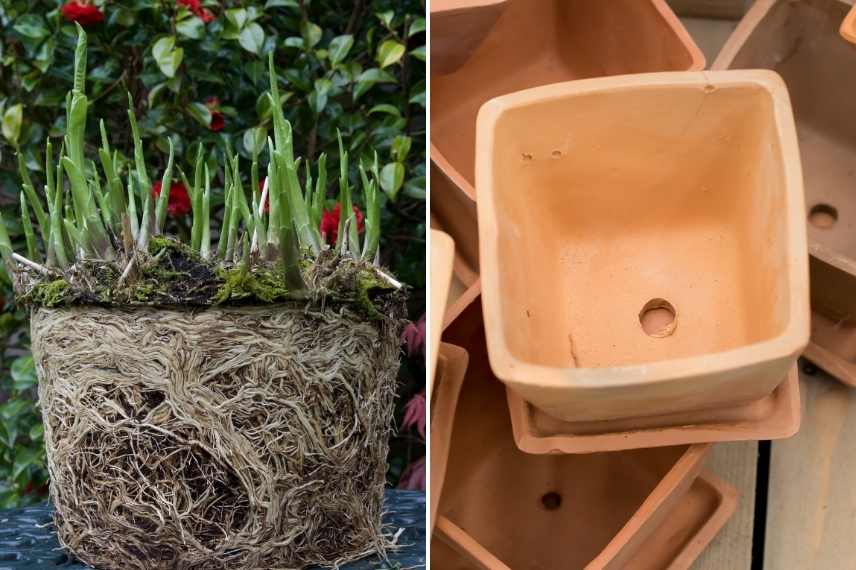
Hosta’s fragile roots. Drainage hole is essential for your pot planting
Care and maintenance
Hostas are very easy to grow. Only watering is essential for your hostas in pots: not tolerating drought, you must ensure potting compost remains consistently moist. Prefer watering in the morning, at the base of the plant, because evening watering attracts slugs and snails.
Hostas can stay in pots for several years, and do not really need repotting. If you divide them, do so in September, once they have stored sufficient energy in their roots and rootstocks.
As with any plant in a pot, an application of fertiliser is recommended in spring, when growth starts around May, then again during summer. Work a few granules of horn meal into the soil. A top-dressing of potting compost is useful for plants that have been in their pot for a long time. To maintain and encourage large leaves on hostas, use a fertiliser high in nitrogen.
If you have clay pots, place them on wood blocks over winter to insulate them from the cold, not for the plant itself which is completely hardy, but to protect pots that might crack.
Which varieties?
All hostas can be grown in pots, there are hundreds of them! Some Hostas develop extra-large foliage while others are much smaller.
If you have limited space and are charmed by these beautiful shade perennials, choose dwarf hostas such as Hosta ‘Warwick Edge’ with cream-marginate leaves (it measures 30 cm high by 60 cm wide), Hosta ‘Blue Mouse Ears’, a miniature cultivar with very attractive bluish foliage that is slug-resistant, or Hosta ‘Ground Master’, variegated and very compact.
To enhance a large patio or generous space, opt for giant hostas such as fortunei ‘Frances’, which, planted in a large container, makes a striking display. Hosta ‘Honeybells’, with handsome bright green foliage, bears remarkable flowers, while Hosta ‘Krossa Regal’, bluish-grey, taller than wide (1 m by 50 cm), is very upright and adds height to your container planting.
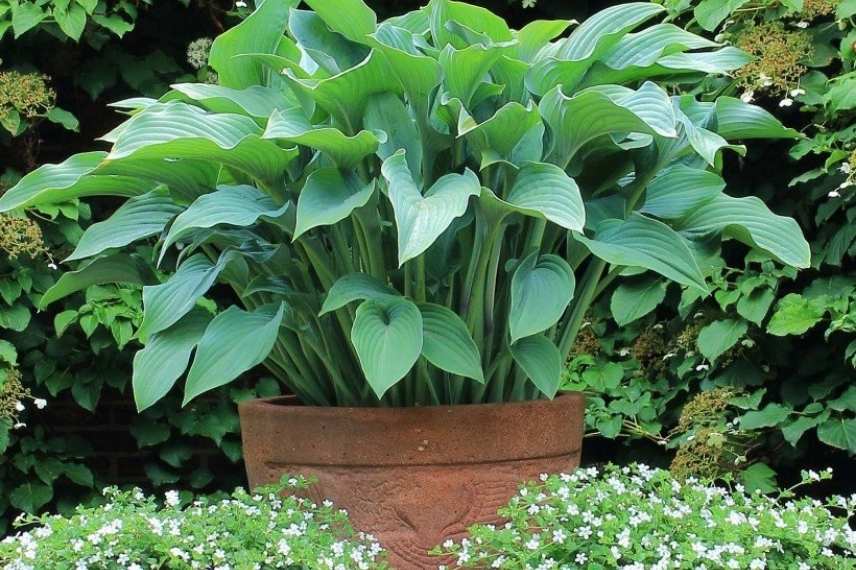
Hosta ‘Krossa Regal‘
How to combine them in a container garden?
Grouping your hostas in pots and creating a container garden is a very effective way to achieve a striking mass display.
You can choose to group only different varieties of hostas (shades of foliage from cream to yellow, variegated, bluish, in different sizes…) to showcase them; they will compose a magnificent scene.
You can also mix them with other lush pots that do well in shady situations such as Adiantum pedatum, Dryopteris erythrosora, Hakonechloas macra, heucheras in purple, Begonia grandis … in pots of different shapes and heights. Combine two or three different types of plants, no more, to create an exotic ambience.
These options are unrivalled for bringing a lush touch and brightening a dull corner of a patio or a shaded terrace!
- Subscribe!
- Contents
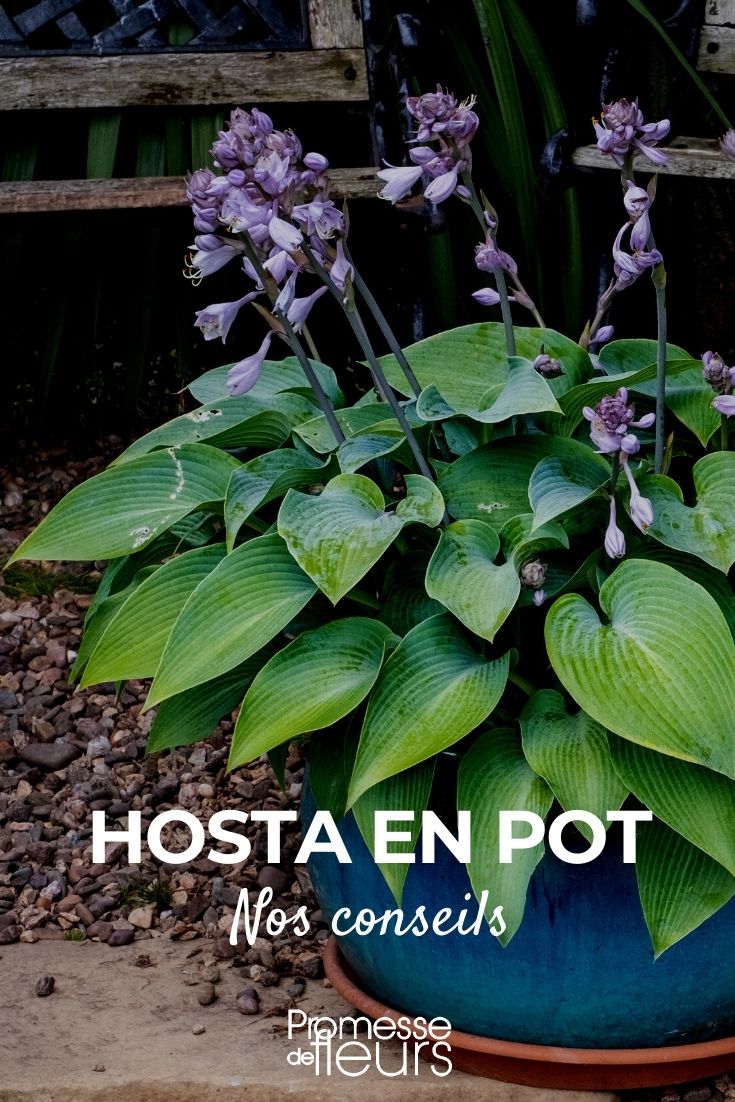































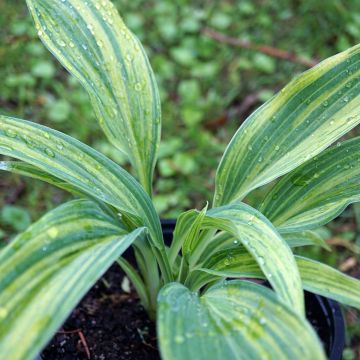
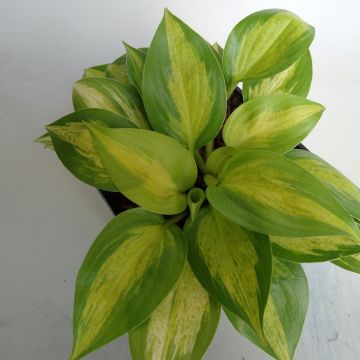
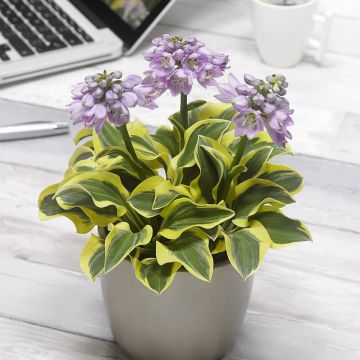
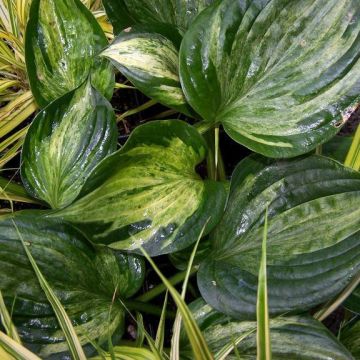

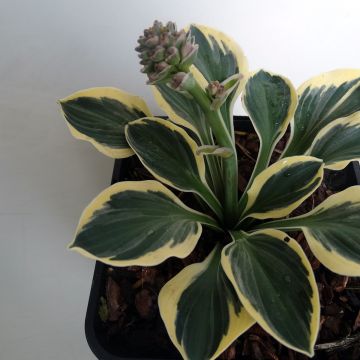


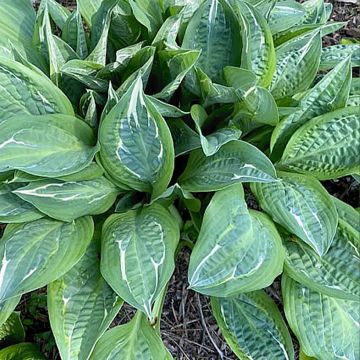
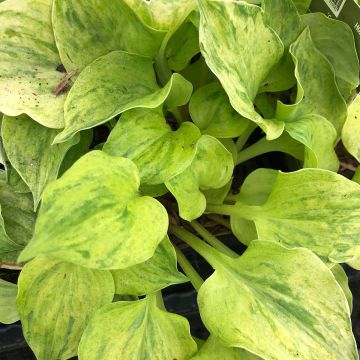
Comments